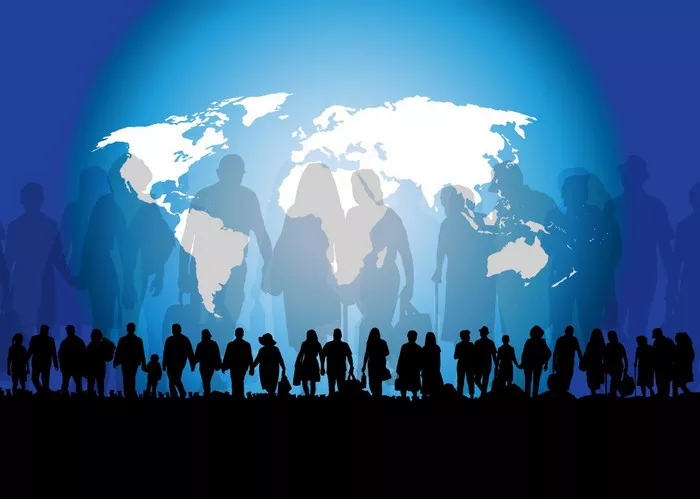Mass migration has emerged as one of the defining global challenges of the 21st century. It encompasses the movement of large groups of people across national borders, often driven by a myriad of socio-economic, political, and environmental factors. While migration has been a constant feature of human history, the scale and complexity of contemporary mass migrations pose unique challenges to governments, societies, and individuals worldwide. In this article, we delve into the multifaceted causes of mass migration, shedding light on the interconnected dynamics that propel people to leave their homes in search of better opportunities, safety, and security.
1. Economic Disparities and Lack of Opportunities
Economic factors play a significant role in driving mass migration. Poverty, unemployment, and lack of economic opportunities in migrants’ countries of origin often compel individuals and families to seek better prospects elsewhere. Economic disparities between regions and countries, exacerbated by globalization and uneven development, create powerful incentives for people to migrate in search of higher wages, improved living standards, and economic stability.
In many developing countries, structural issues such as unequal distribution of resources, limited access to education and healthcare, and insufficient job prospects contribute to persistent poverty and economic stagnation. As a result, individuals and families may feel compelled to migrate to countries with stronger economies and greater job opportunities. The promise of better wages and the possibility of lifting themselves and their families out of poverty often drive migrants to undertake perilous journeys in search of economic prosperity.
2. Conflict, Violence, and Political Instability
Conflict, violence, and political instability are major drivers of mass migration, forcing millions of people to flee their homes in search of safety and security. Armed conflicts, civil wars, and persecution create humanitarian crises, displacing entire populations and uprooting communities. The breakdown of governance structures, human rights abuses, and ethnic or religious tensions further exacerbate instability, prompting people to seek refuge beyond their borders.
Regions experiencing protracted conflicts, such as Syria, Afghanistan, South Sudan, and Yemen, have witnessed massive displacement, with millions of people becoming refugees or internally displaced persons (IDPs). The fear of persecution, violence, or even death compels individuals and families to undertake dangerous journeys in search of asylum and protection. Moreover, the lingering effects of conflict, including economic devastation and infrastructure damage, often hinder prospects for return and contribute to prolonged displacement.
3. Environmental Degradation and Climate Change
Environmental factors, including natural disasters, environmental degradation, and the impacts of climate change, are increasingly recognized as drivers of mass migration. Rising sea levels, extreme weather events, desertification, and water scarcity pose significant challenges to communities, particularly in vulnerable regions with limited resources and adaptive capacity.
For many people, environmental changes directly threaten their livelihoods, food security, and physical safety. Displacement induced by environmental factors, often referred to as climate-induced migration or environmental migration, can occur both gradually and suddenly. Slow-onset environmental changes, such as prolonged droughts or land degradation, may compel rural populations to migrate in search of alternative means of subsistence. Similarly, sudden disasters like hurricanes, floods, or wildfires can force communities to flee their homes with little warning, leading to displacement and mass migration.
4. Demographic Pressures and Urbanization
Demographic factors, including population growth, urbanization, and demographic imbalances, also contribute to mass migration. Rapid population growth, particularly in developing countries with limited resources and infrastructure, can strain local economies and social services, exacerbating poverty and unemployment. In response, individuals may migrate from rural to urban areas in search of employment opportunities, better services, and improved living standards.
Urbanization, driven by demographic trends and rural-urban migration, places significant pressure on urban centers, leading to overcrowding, informal settlements, and strained resources. In some cases, migration flows may also be influenced by demographic imbalances, such as gender disparities or age-related factors. For instance, young adults may migrate in search of education or employment opportunities, while aging populations in developed countries may attract migrant workers to fill labor gaps in healthcare, eldercare, and other sectors.
5. Socio-Cultural Factors and Network Effects
Socio-cultural factors and social networks play a crucial role in shaping migration patterns and decisions. Migration often occurs within existing social networks, with individuals following family members, friends, or community members who have already migrated. These social networks provide crucial support, information, and resources to prospective migrants, facilitating the migration process and easing the transition to a new environment.
Moreover, cultural ties, language similarities, and historical connections between countries can influence migration flows and destination choices. Diaspora communities, formed by previous waves of migration, often maintain strong ties with their countries of origin and may contribute to ongoing migration through remittances, investments, and cultural exchange. Additionally, perceptions of migration, shaped by cultural norms, social attitudes, and government policies, can either facilitate or inhibit the movement of people across borders.
Conclusion
Mass migration is a complex and multifaceted phenomenon driven by a combination of economic, political, environmental, demographic, and socio-cultural factors. Understanding the root causes of mass migration is essential for developing effective policies and interventions to address the challenges and vulnerabilities faced by migrants and host communities alike. By addressing the underlying drivers of migration, including poverty, conflict, environmental degradation, and demographic pressures, governments, international organizations, and civil society can work towards creating a more inclusive, equitable, and sustainable future for all.


